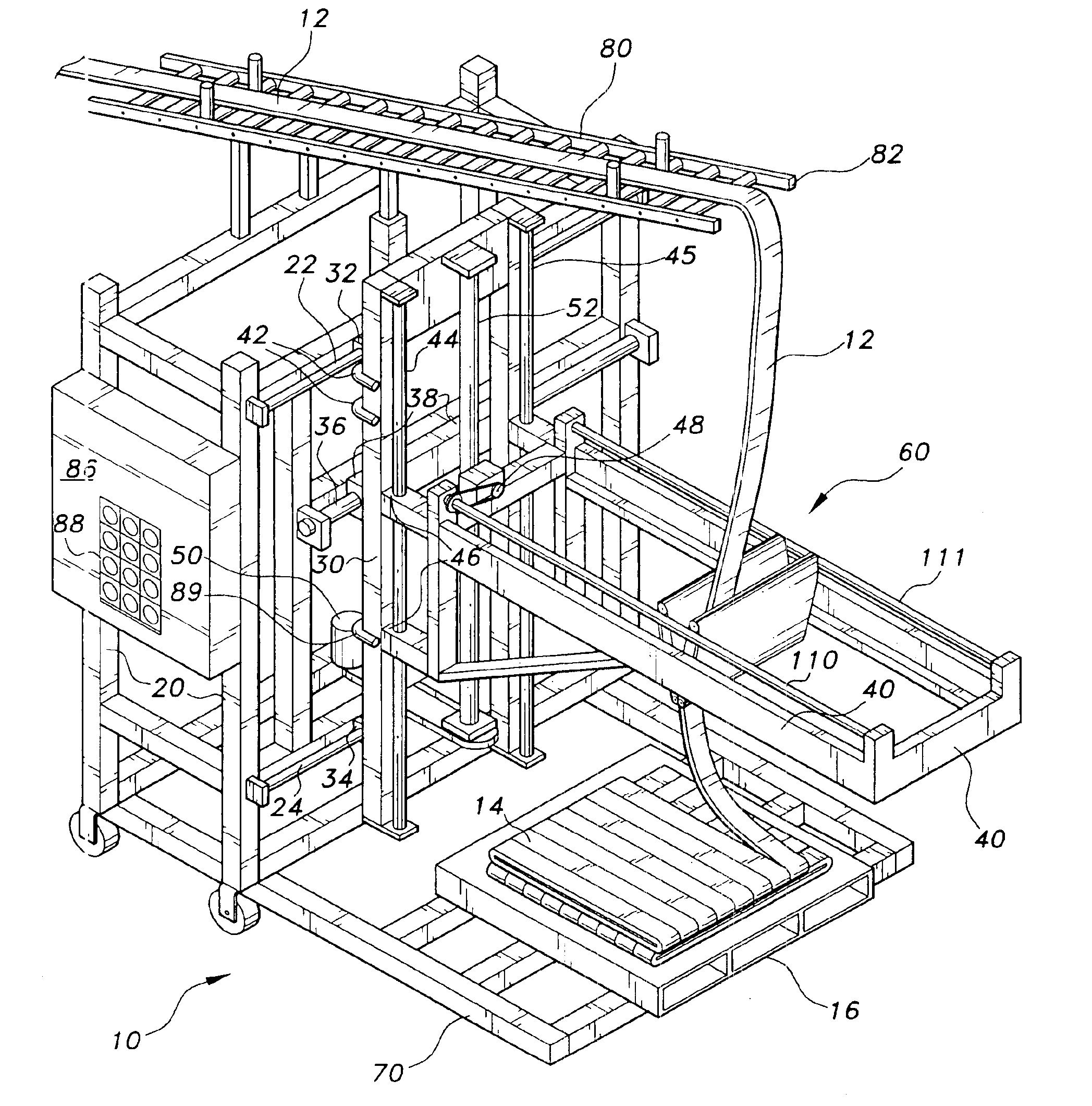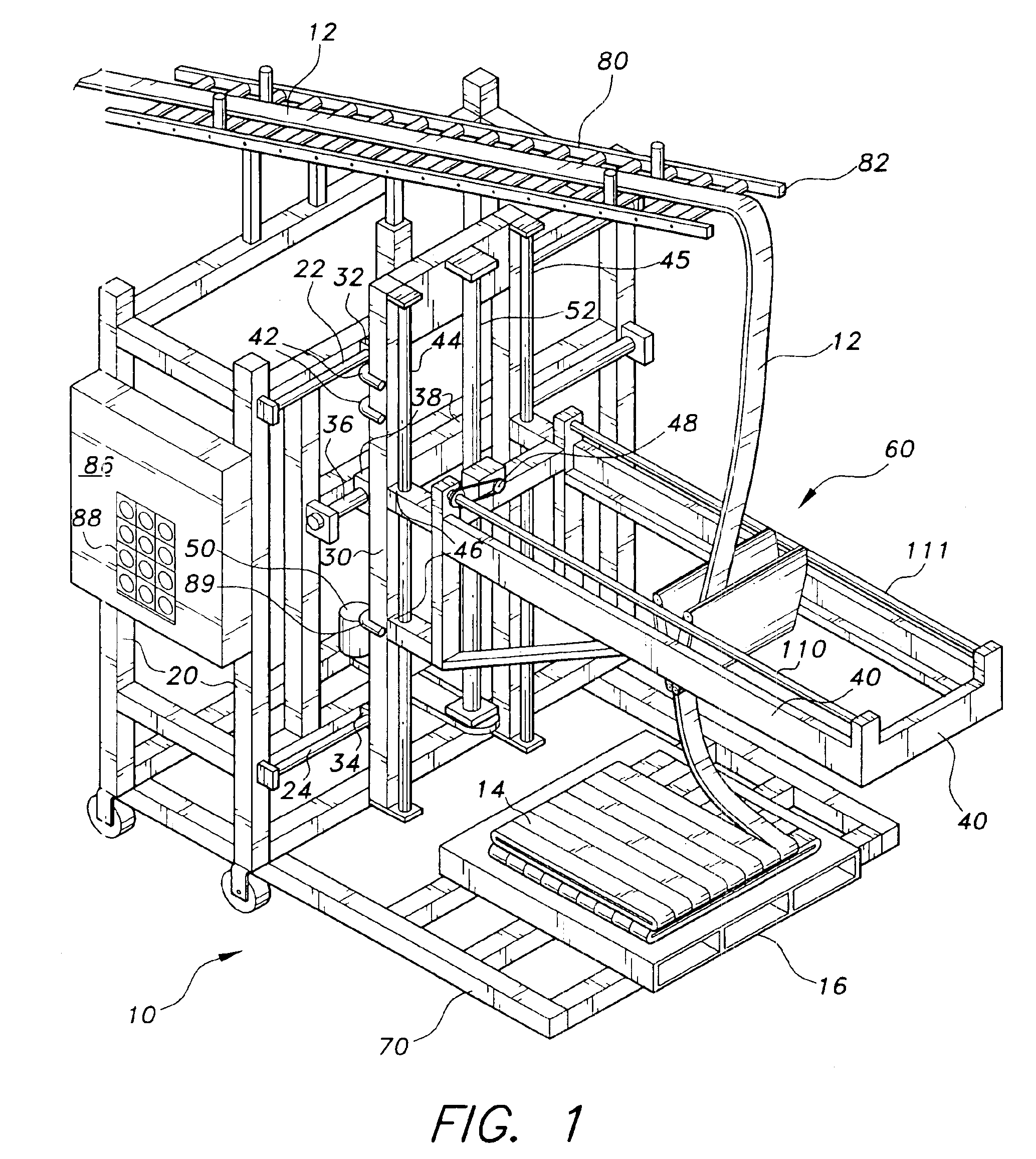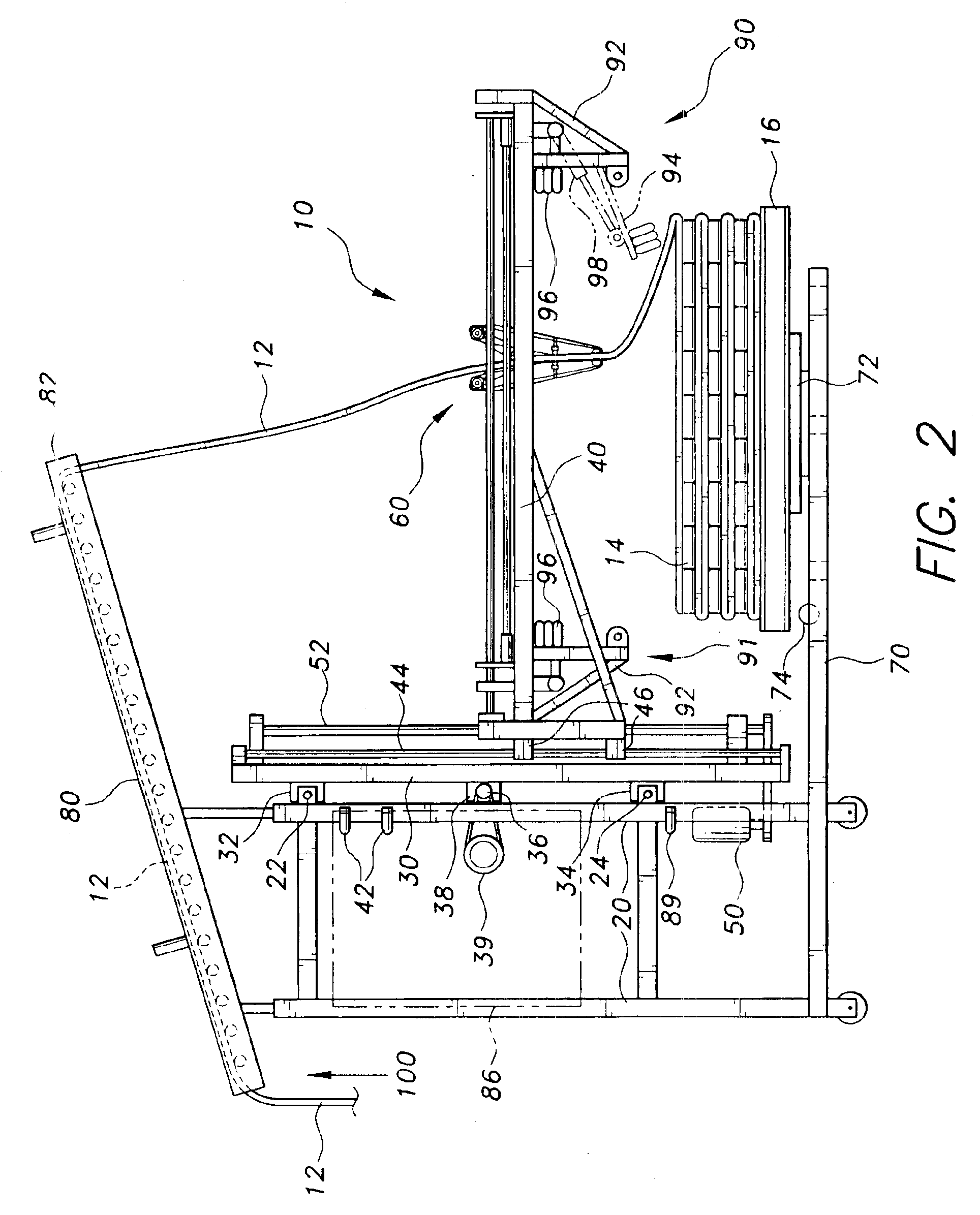Automated reciprocal stacking assembly
- Summary
- Abstract
- Description
- Claims
- Application Information
AI Technical Summary
Benefits of technology
Problems solved by technology
Method used
Image
Examples
Embodiment Construction
The present invention is an automated reciprocal stacking assembly for a relatively thin and flexible continuous sheet of stock material. The automated reciprocal stacking assembly is particularly adapted for stacking continuous strips of rubber on pallets during the manufacture of tires, but is not limited to being used in this manner and may be used for any appropriate application. The present automated reciprocal stacking assembly will be useful for stacking any other materials with similar characteristics and dimensions as the sheet rubber.
FIG. 1 depicts an environmental, perspective view of an automated reciprocal stacking assembly 10 according to the present invention. The moving components of the automated reciprocal stacking machine 10 extend from a stationary, vertical outer frame 20. The outer frame 20 is made from any suitable, sturdy structural material including, but not limited to, steel, rectangular tubing, angle or channel beams. The outer frame 20 provides support f...
PUM
 Login to View More
Login to View More Abstract
Description
Claims
Application Information
 Login to View More
Login to View More - R&D
- Intellectual Property
- Life Sciences
- Materials
- Tech Scout
- Unparalleled Data Quality
- Higher Quality Content
- 60% Fewer Hallucinations
Browse by: Latest US Patents, China's latest patents, Technical Efficacy Thesaurus, Application Domain, Technology Topic, Popular Technical Reports.
© 2025 PatSnap. All rights reserved.Legal|Privacy policy|Modern Slavery Act Transparency Statement|Sitemap|About US| Contact US: help@patsnap.com



